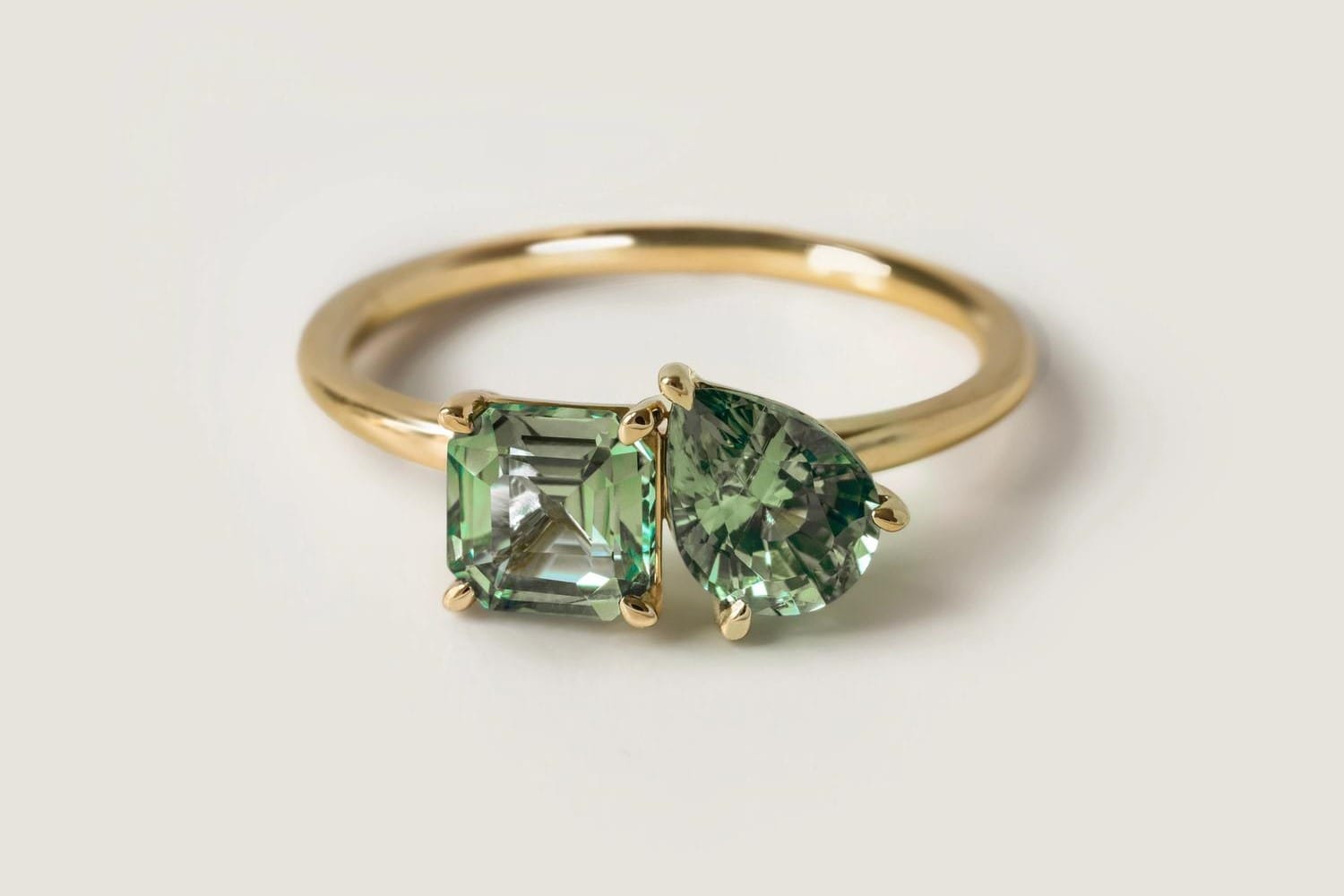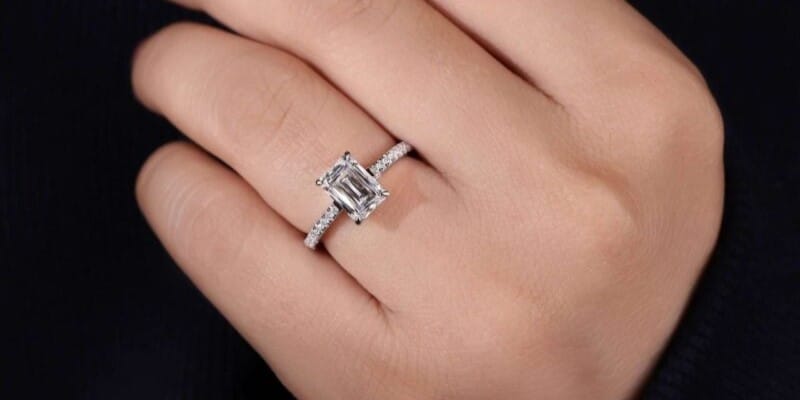What Does 750 Mean on Jewelry ?
Finding the small, stamped markings on your cherished jewelry is often a moment of curiosity, leading many to ask: What does 750 mean on jewelry? This tiny numerical hallmark is one of the most important indicators of quality and value, yet it’s frequently misunderstood. The 750 stamp is the universal sign for 18-karat gold, signifying that the piece is composed of 75% pure gold.
This guide cuts through the confusion, explaining the official meaning behind the 750 marking, how it relates to the karat system (like 10k, 14k, and 24k), and why a piece bearing the 750 hallmark is considered a luxurious and valuable investment. Understand this mark to ensure you know the true quality and composition of your gold pieces.
Understanding Gold Purity and Hallmarks
If you’ve ever browsed gold jewelry, you may have noticed a small number stamped somewhere on the piece – often “750.” This tiny marking can feel like a secret code, leaving many buyers wondering: What does 750 mean on jewelry? Understanding this hallmark is key to making confident choices when buying gold.
In this guide, we’ll explain what the “750” stamp signifies, why it matters, and how to recognize authentic 18K gold. Whether you’re a first-time buyer, collector, or gift shopper, knowing your gold purity marks empowers you to choose quality pieces with peace of mind.

What Does 750 Mean on Jewelry?
The number 750 indicates that the jewelry is made of 18 karat gold, which means it contains 75% pure gold mixed with other metals to improve durability.
Here’s what the 750 gold meaning includes:
- The “750” hallmark represents 750 parts per thousand of pure gold in the alloy.
- The remaining 25% consists of metals like copper, silver, or palladium, which add strength and influence color.
- This purity level is popular because it balances gold’s natural softness with practical wearability.
- 18K (750) gold jewelry is common in rings, necklaces, bracelets, and earrings worldwide.
Understanding this mark helps buyers know exactly what quality they’re getting.

How Gold Purity Is Measured: Karats and Fineness
Gold purity is expressed mainly in two systems:
- Karat system: Measures gold content out of 24 parts, so 18K means 18 parts gold and 6 parts other metals.
- Fineness system: Expresses purity in parts per thousand, where 750 means 75% pure gold.
- Both systems are internationally recognized and often stamped together on jewelry.
Knowing both systems helps you interpret different markings confidently, no matter the country or brand.
Why the 750 Mark Matters for Buyers
The “750” stamp is more than just a number; it guarantees several important things:
- It assures a minimum gold content of 75%, giving your piece inherent value.
- It signifies durability suitable for everyday wear, unlike higher purity gold, which is softer.
- It reflects trusted certification standards, as hallmarking is regulated in many countries.
- Buying jewelry with a clear 750 mark helps you avoid fakes or substandard alloys.
This hallmark is your assurance of quality and authenticity.
Common Jewelry Items Marked 750
You’ll typically find the 750 mark on a variety of fine jewelry, including:
- Engagement and wedding rings
- Chains and necklaces
- Bracelets and bangles
- Earrings and pendants
Its popularity stems from the perfect mix of luxury and strength for pieces designed to last.
How to Verify the Authenticity of 750 Gold Jewelry
To confirm your jewelry’s gold purity:
- Look for the “750” stamp on discreet areas such as the inside of rings or clasps.
- Request a certificate of authenticity when buying from reputable jewelers.
- Use simple home tests like magnet checks and acid testing, though professional appraisal is best.
- Purchase from trusted sellers who provide transparent hallmarking and return policies.
Verification ensures you invest in genuine 18K gold.
Difference Between 750 and Other Gold Marks
Here’s how 750 compares to other common gold purity marks:
- 585 (14K gold): Contains 58.5% pure gold; more durable but less valuable.
- 916 (22K gold): Contains 91.6% pure gold; softer but richer in gold content.
- 999 (24K gold): Nearly pure gold; very soft and usually reserved for investment bars or jewelry that’s not everyday wear.
Choosing between these depends on your priorities for durability, value, and color.
Care Tips for 750 Gold Jewelry
Keeping your 18K gold looking its best is easy with some simple care:
- Clean regularly with a soft cloth and mild soap.
- Avoid exposing the jewelry to harsh chemicals like bleach or chlorine.
- Store pieces separately to prevent scratches.
- Consider professional polishing if the jewelry loses its shine over time.
Proper care maintains both the look and longevity of your 750 gold jewelry.
Why Choose 750 Gold Over Other Purities
Many buyers prefer 18K (750) gold for these reasons:
- It offers an ideal balance between purity and durability, making it perfect for daily wear.
- The warm, rich color of 18K gold complements many styles and skin tones.
- It holds better resale value than lower karat gold.
- It’s a trusted industry standard for fine jewelry worldwide.
These benefits make 750 gold a smart and stylish choice.
Buying Tips: What to Look for When Shopping for 750 Gold Jewelry
When shopping, keep these pointers in mind:
- Always check for a clear “750” hallmark on the jewelry.
- Buy from jewelers who provide authenticity certificates and clear return policies.
- Compare prices to understand market rates for 18K gold and avoid suspiciously low deals.
- Ask about the alloy metals used, especially if you have metal sensitivities.
Being informed leads to smarter purchases and lasting satisfaction.
Conclusion – Confidently Recognize and Choose 750 Gold Jewelry
Understanding what 750 means on jewelry transforms your buying experience. This hallmark is your key to recognizing authentic 18K gold – valued for its purity, beauty, and durability.
Next time you shop for gold, look for the 750 stamp and choose with confidence. For more insights into gold purity and buying tips, explore our Shop 18K Gold Jewelry collection and dive deeper into gold karats at our Learn More About Gold Karats education page.
